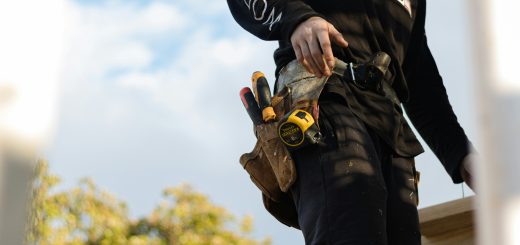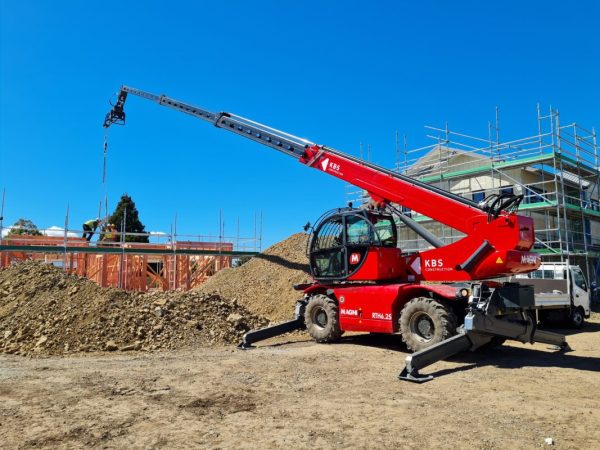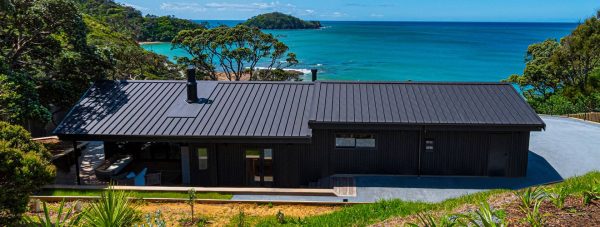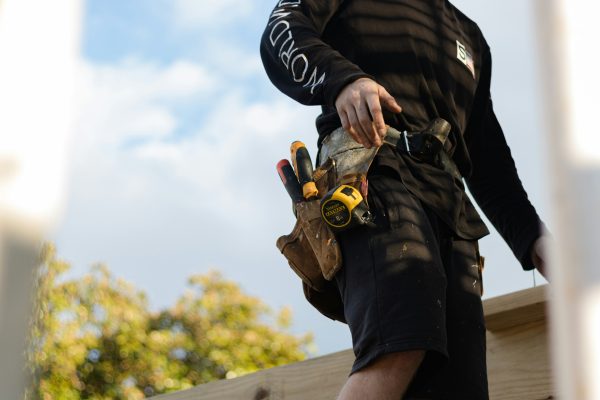The Hidden Costs of Neglecting Building Waterproofing
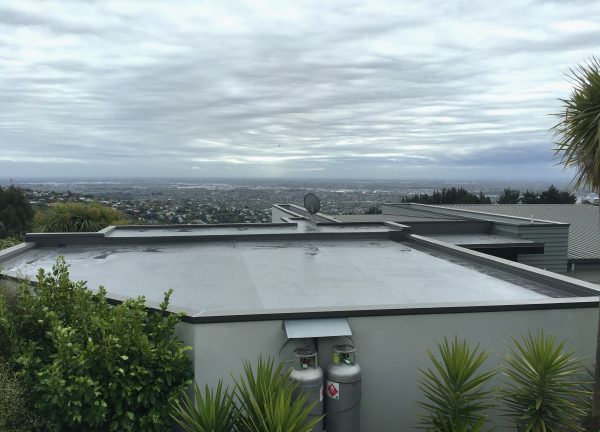 In the complex realm of building maintenance and management, some elements often fade into the background, overlooked amidst more immediate concerns. Among these underappreciated aspects is building waterproofing. It’s an unsung hero that silently shields your building, ensuring it stays dry, safe, and hospitable. Yet, when neglected, it can spawn a host of hidden costs, which aren’t just monetary but also influence the health of the occupants, the structural integrity of the building, and even its market value.
In the complex realm of building maintenance and management, some elements often fade into the background, overlooked amidst more immediate concerns. Among these underappreciated aspects is building waterproofing. It’s an unsung hero that silently shields your building, ensuring it stays dry, safe, and hospitable. Yet, when neglected, it can spawn a host of hidden costs, which aren’t just monetary but also influence the health of the occupants, the structural integrity of the building, and even its market value.
Building waterproofing isn’t merely about fortifying against the occasional leaky pipe or a heavy downpour; it’s a comprehensive protective measure aimed at guarding your property from the debilitating impacts of water damage. Considering its importance, the ramifications of ignoring waterproofing are both significant and far-reaching. This article is designed to help you understand these repercussions by illuminating the ‘hidden costs’ that arise when this critical aspect of building maintenance is neglected. So, buckle up and let’s delve into this insightful exploration together.
Understanding the Importance of Building Waterproofing
The Role in Maintaining Structural Integrity
Building waterproofing is the unsung hero that keeps the skeleton of your structure – its foundation, walls, and roof – protected from water infiltration. Over time, water exposure can lead to a multitude of structural issues. For example, water seeping into concrete can cause it to crack and crumble, while in wooden structures, persistent moisture can result in rot. Even small amounts of water intrusion, if neglected over a prolonged period, can result in serious damage to the building’s structural integrity. Therefore, effective waterproofing is pivotal to ensuring your building’s longevity.
Promoting Occupant Comfort and Health
Waterproofing plays a key role in maintaining the comfort and health of those living or working within a building. A leaky roof or damp walls are not just aesthetically unappealing, but they can also create an uncomfortable living or working environment. Chronic moisture can lead to the growth of mold and mildew, which can trigger a host of health issues, including allergies and respiratory problems. By ensuring your building is properly waterproofed, you are also ensuring a healthier environment for its occupants.
Contribution to Energy Efficiency
Many people are unaware of the role that effective waterproofing plays in energy conservation. Damp and leaky walls and roofs can lead to a loss of heat during winter and cool air in the summer, making your heating and air conditioning systems work harder and thereby increasing your energy consumption. Waterproofing can act as an extra layer of insulation, preventing such energy losses and contributing to more efficient and sustainable building operation.
Neglecting waterproofing can undermine the structural stability, comfort, and energy efficiency of your building. Therefore, it’s not a topic that should be pushed to the sidelines in building maintenance discussions. Rather, its importance should be recognized and action should be taken to ensure adequate waterproofing measures are in place.
Common Consequences of Neglecting Building Waterproofing
Structural Damage
When a building’s waterproofing is neglected, one of the most severe outcomes is structural damage. Prolonged water exposure can lead to a variety of issues including foundation cracks, wall buckling, and ceiling damage. For instance, persistent moisture can cause the steel reinforcements within the concrete to rust, leading to what’s known as ‘concrete cancer.’ Similarly, in wooden structures, constant dampness can result in wood rot. These damages can not only compromise the building’s structural integrity but also result in hefty repair costs.
Health Hazards
In addition to the physical damage to the building, neglecting waterproofing can pose significant health risks. A damp environment is an ideal breeding ground for molds and mildew. These fungi can release spores into the air, causing a variety of health issues including allergies, asthma, and other respiratory conditions. Long-term exposure can even lead to more serious health complications. Therefore, waterproofing isn’t just about maintaining a building; it’s also about safeguarding the health of its occupants.
Decreased Property Value
A building with persistent water damage issues can see a significant decrease in its market value. Prospective buyers or tenants may be deterred by the visible signs of water damage such as damp spots, stains, or mold growth, and the potential health risks and repair costs they represent. Further, any serious structural issues resulting from water damage could be flagged during property inspections, further reducing the building’s value. Thus, proper waterproofing is not just a maintenance concern, but a critical factor in preserving the property’s value.
The Hidden Costs
Unexpected Repairs
One of the most apparent hidden costs of neglecting waterproofing is the expense of unexpected repairs. What might begin as a minor leak can quickly escalate into major structural damage if not promptly addressed. These repairs can be quite costly, especially if they involve foundational or structural remediation. Furthermore, these costs can balloon if water damage leads to electrical issues or if extensive mold remediation is required. Regular maintenance and waterproofing are generally far less costly than the price of these extensive, unexpected repairs.
Energy Loss
The hidden cost of energy loss is another important factor often overlooked. A building that isn’t properly waterproofed can experience significant thermal losses. Damp walls and roofs can conduct heat away in the winter and let in unwanted heat during the summer, forcing HVAC systems to work harder to maintain comfortable temperatures. This extra work can result in significantly higher utility bills. Hence, proper waterproofing contributes not only to a comfortable indoor climate but also to energy efficiency and cost savings.
Business Interruptions
For commercial buildings, water damage can lead to costly business interruptions. If water leakage results in significant damage, the building might need to be evacuated for repair work. This can disrupt business operations, leading to lost revenue, and in some cases, lost customers or reputational damage. For residential properties, similar disruptions could displace tenants, leading to uncomfortable living conditions and potential breaches of lease agreements. Therefore, preventive waterproofing is crucial for uninterrupted business or residential operations.
Insurance Complications
Water damage can also lead to complications with insurance claims. Some insurance policies do not cover damage caused by neglected maintenance, which includes inadequate waterproofing. Therefore, property owners may find themselves facing large out-of-pocket expenses for repair work. Even if the damage is covered, repeated claims can lead to increased insurance premiums. Therefore, maintaining proper waterproofing is an important step in avoiding such complications.
In essence, the hidden costs of neglecting building waterproofing can add up quickly and significantly. They extend beyond the immediate visible damage, affecting energy efficiency, business operations, and even insurance premiums. These hidden costs underline the importance of maintaining a robust waterproofing system as a preventative measure to save costs in the long run.
Preventative Measures and Solutions
Regular Inspections and Maintenance
Preventing water damage and its associated costs starts with regular inspections and diligent maintenance. These evaluations, ideally performed by professionals familiar with identifying potential water intrusion and damage, should focus on areas of your building most susceptible to water issues, including roofs, walls, basements, and areas surrounding plumbing fixtures. By catching and addressing issues early through consistent maintenance, building owners can avert larger problems down the line, saving both time and money.
Understanding the Need for Professional Intervention
While basic maintenance and routine inspections are tasks that building owners can often handle, understanding when to seek professional intervention is crucial. Certain signs of water damage or potential waterproofing issues may not be apparent to the untrained eye. A professional, however, can perform a more comprehensive evaluation and provide a strategic approach to tackle these problems, utilizing their expertise in the field.
Investing in Preventive Measures
Investing in preventive measures is another critical step in averting water damage. Although each building has unique needs and challenges, understanding the importance of comprehensive waterproofing and the benefits it provides is essential for all building owners. Rather than viewing waterproofing as an unnecessary expenditure, consider it as an investment that protects the building’s structural integrity, maintains a healthy environment for occupants, and preserves the property’s market value.
In essence, the combination of regular inspections, professional intervention when needed, and thoughtful investment in preventive measures can significantly reduce the hidden costs associated with water damage. As a building owner, these steps will not only save you from unexpected expenses but also ensure the longevity and integrity of your property.
Conclusion
Ignoring building waterproofing can be a costly mistake, leading to far-reaching consequences that go beyond the immediately visible damage. The hidden costs of neglecting waterproofing – including unexpected repairs, energy loss, business interruptions, and insurance complications – are significant and can escalate quickly if left unaddressed.
However, understanding the vital role that waterproofing plays in maintaining a building’s structural integrity, ensuring occupant health, and preserving property value is the first step in avoiding these costs. By implementing regular inspections, seeking professional intervention when needed, and investing in preventive measures, building owners can mitigate these risks.
In the end, building waterproofing isn’t a topic to be overlooked or considered trivial in the broader context of building maintenance. It’s a crucial aspect that demands attention and proactive action. By acknowledging and addressing this, building owners can protect their investment, provide a safer and more comfortable environment for occupants, and ensure the long-term stability and value of their property.



